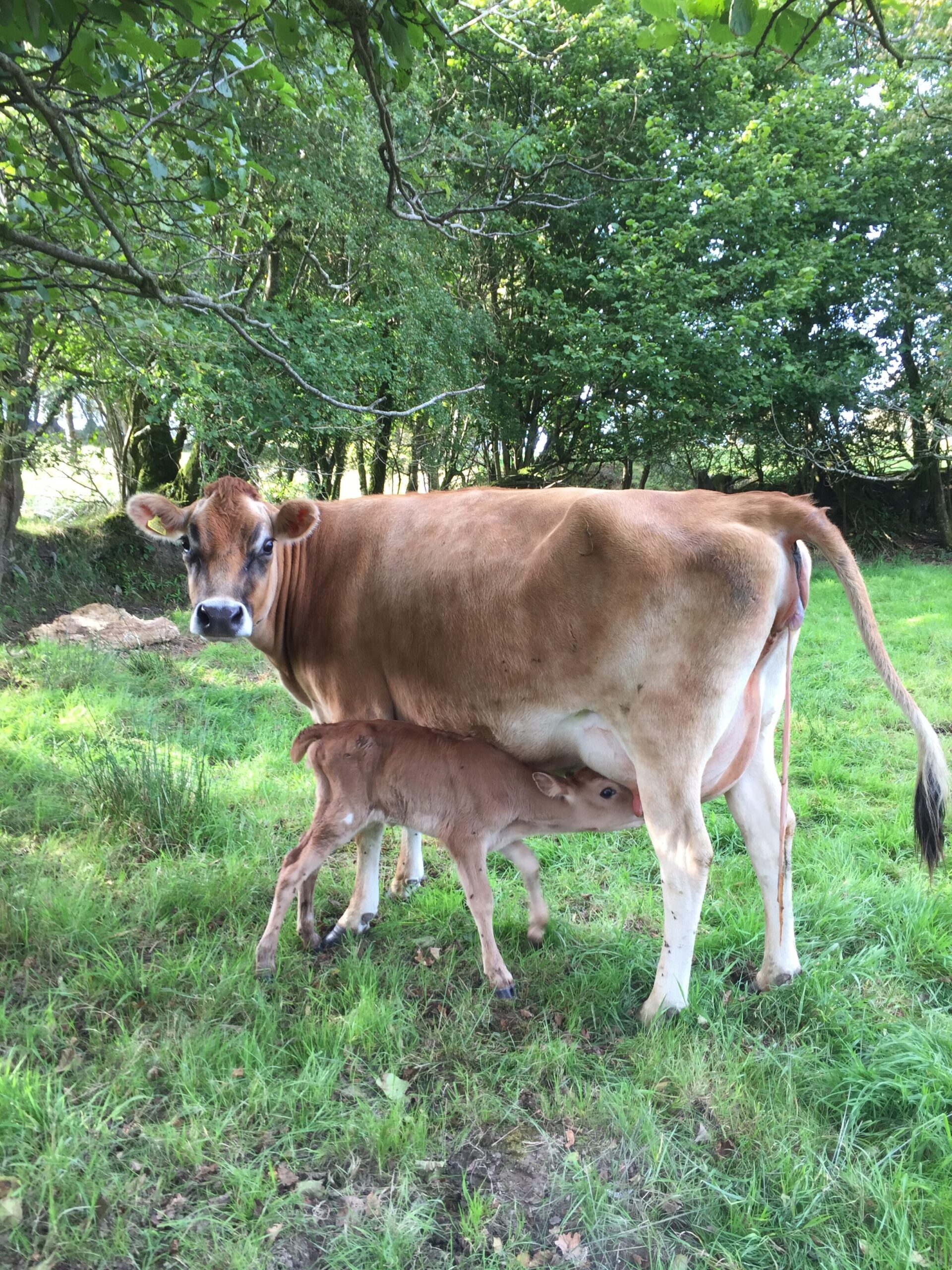We recently got back from our first family holiday, which was an adventure across Germany by train. We spent a few days in Berlin visiting museums and eating nice food, then visited a small dairy farm near the Polish border, travelled across the country to spend a few days in the Black Forest before spending a couple of days in Köln before heading home.
It was a bit of a busman’s holiday as the main reason for the trip was to go and see a mobile milking parlour in use on a small dairy outside Berlin. We were interested in a particular model made by a Lithuanian company and Berlin was the nearest place to go see it in action and it happened to be a lovely small dairy farm that milks 40 cows, rears the calves on a nurse cow and bottles and produces their own dairy and beef to sell direct to the public. Anya, her husband Janusz and their children made us very welcome and showed us everything they could about their farm in the few days we stayed with them. Their farm is an ecological oasis in an ecologically-barren region of biogas maize and dusty lifeless ‘soils.’
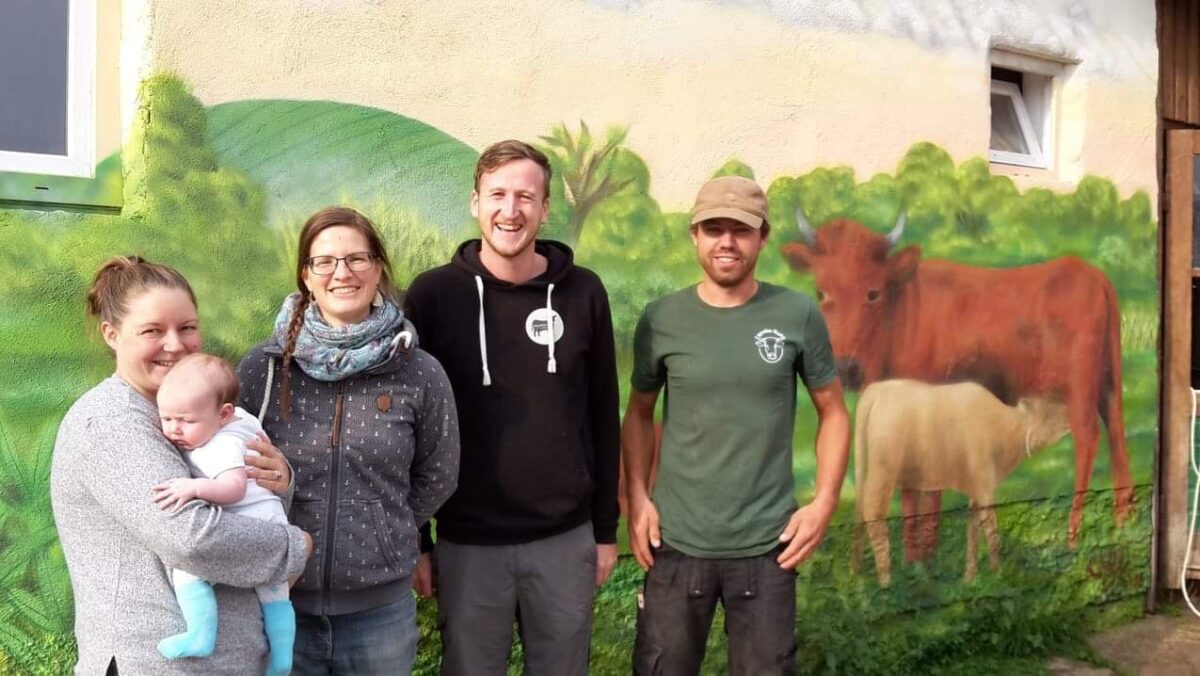
I got to milk the cows one morning, and knew pretty quickly that I wanted this particular parlour. This model allows you to milk 6 cows at a time and there is a simple pulley system to open and close gates. I found it straightforward and fairly intuitive to use. It was so nice to use a system with proper vacuum pressure — the suction provided by our portable milking machine is often not quite good enough which can cause problems when putting the cluster on the cow and can also be a contributing cause to mastitis. Being able to milk 6 cows at a time, in a simple, efficient manner felt so much easier than our system. They can milk 40 cows in an hour and with no stress. In our system there can sometimes be a bit of a battle as the flow of the system was never quite right making it harder work than it should’ve been for us and the cows.
Milking with their system is the most I’ve ever enjoyed milking. I milked with Janusz, so I only had to look after 2 or 3 cows at a time, but I could see quite quickly how I’d be able to co-ordinate 6 at a time by myself. In our case the milk from the cow will go straight into a bulk cooling tank, which will chill it down below 4C within an hour, which is important from an environmental health perspective.
For us, one of the most impressive features is how easy it is to clean the system after milking — you basically just press a button and it does it all for you! In our old system we have to fill up several buckets and whilst it doesn’t take too much time, it always feels more laborious than it should. And when it’s cold in winter, bending and lifting buckets repeatedly has never done my back much good. I’m happy to let the push of a button do it for me in future. Needless to say we were impressed and have since ordered one for ourselves, which should arrive in just a week or two. We’ve been very happy with the company so far – if you’re interested for yourself check them out here.
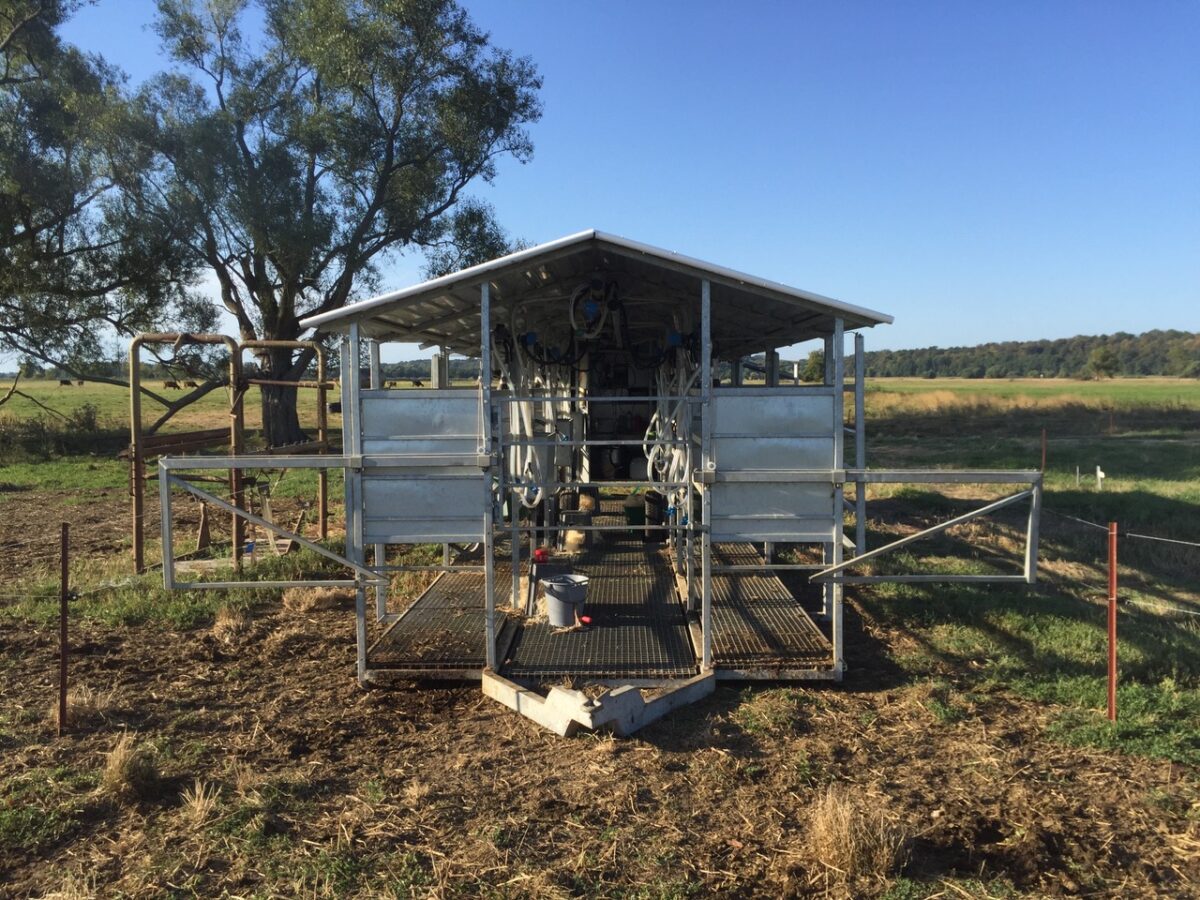
The biggest challenge with a mobile milking parlour in the UK is not poaching the ground (making it muddy). We were recommended a mobile milking parlour 2 years ago, but it’s taken us this long to get our head around how to manage one. I was chatting to our friend Kit about the dairy one evening in the summer and he asked why we weren’t getting a mobile parlour. I gave him lots of reasons, but that night my head was buzzing so I spent most of the night researching them and found this model.
We didn’t get to see this parlour moved as at Hof Stohlze Kuh they only move it every few months — a benefit of living in a very dry region of Germany (circa 500mm rainfall). In Wales that will never work, so we must move it every day or so, which means it moves with the cows daily moves. One of the decisions we’ve made that ties into this, is that we’ll dry the cows off every December before calving in March; milking outdoors at that time would be impossible here in all but the very driest of winters. However, this winter we’ve just started calving, which means milking through winter, so we’ll park the parlour in the yard — another advantage of a mobile system.
The current plan is to drive it the same route every time, so that we target all compaction and poaching along one pathway. Alongside the parlour will be another trailer that carries the cooling tank, diesel generator and a few other important parts — each morning we’ll need to drive this back to the farm.
Another important new investment we’re making is to buy a milk vending machine from The Milking Station Company in Somerset (who have been great, and I’d highly recommend). Bottling and washing milk bottles by hand is fine at a very small scale, but becomes inefficient when you want to increase in scale. Instead next year our customers will look after their own glass bottle — all we need to do is pump the cold milk straight from the portable cooling tank into the vending machine.
In the new year we’re also looking to buy a small pasteuriser so that we can start to sell milk to local coffee shops and small retailers. Being able to pasteurise expands our potential market and we’re excited to think our milk will be served in some of our favourite local places.
All this will be by far the biggest amount of money we’ve invested since starting farming. At some point, in order to make a living from this, some investment has to be made. It’s all relative to scale. We now feel comfortable that we’ve established enough of a reputation and customer base to be able to invest confidently. If everything goes to plan it will pay itself back within a few years and yet the equipment will last many more. That contrasts with the multi-generational 100 year debts that are being taken on by dairy farms around us. I hope it works for those families, but it seems ridiculously risky to me. It allows little flexibility for changing circumstances.
From the beginning of 2020 we’ll be paying ourselves a proper wage for the first time, which is exciting to think about, particularly as it’s so hard to generate a genuine wage from farming without subsidy. Direct selling makes that possible.
One of the major advantages of a mobile milking parlour is that we’re not tied to this particular piece of land either. Should we no longer be able to rent land from our neighbours, we can always find land within a 20 minute drive that we can manage, and we can just move the parlour there instead. I would be nervous to spend this much money on a ‘normal parlour’ (i.e. fixed in place) as we’d always be dependent on the land adjacent to the farm. We now have total flexibility and so the risk is reduced. Farming is as much about minimising risk as much as it is maximising opportunities.
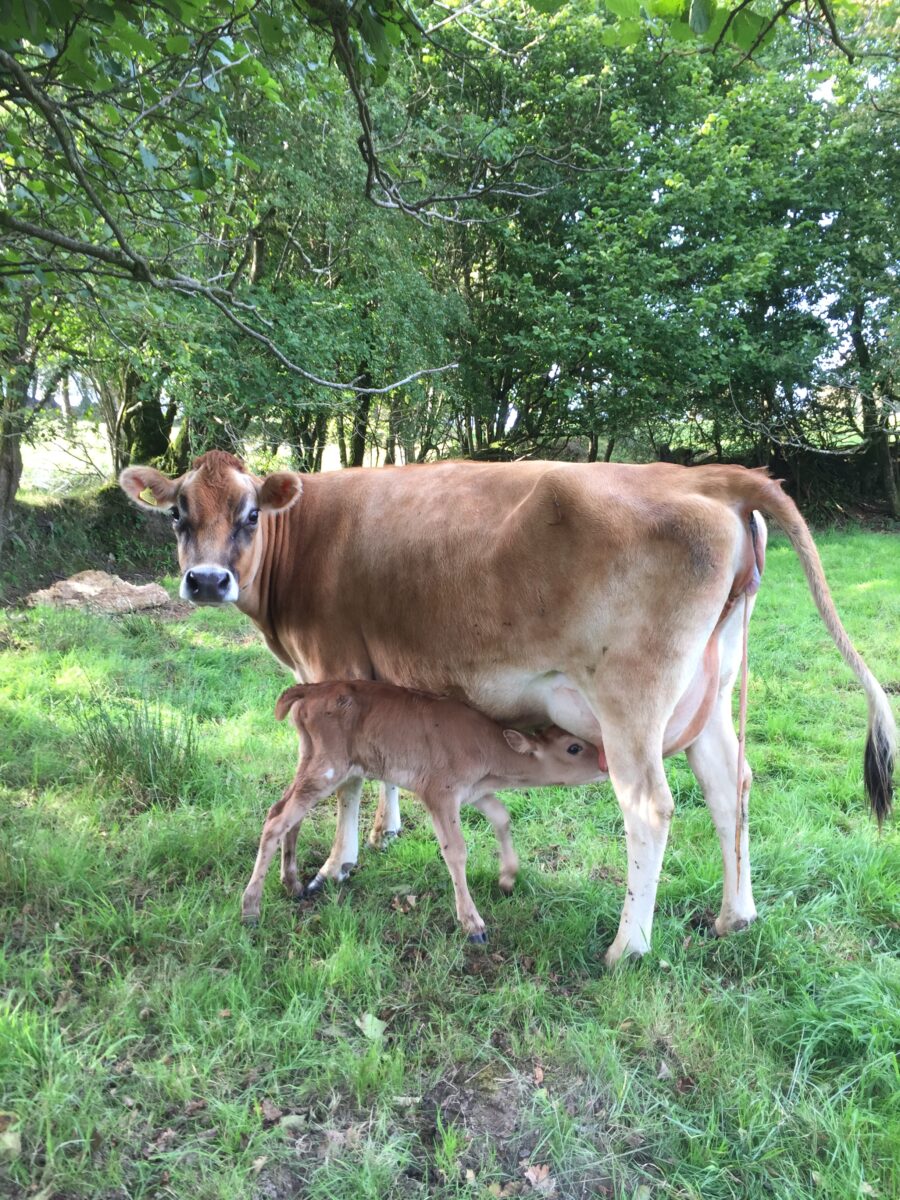
We’re now well into calving. We were planning to calve next spring— but our Jersey bull, Sven, had other ideas! We thought he was too young to get the job done back in March, but clearly he did a fine job! He’s managed to get 17 out of 20 cows in-calf, 12 of which will be milked. We’ve had Sven since he was a calf, and we’re really happy he’s siring so many of our future herd, because his mother, Blossom, was a lovely cow that we sadly lost a couple of years back to a freak injury.
At time of writing we’ve had 6 calves this autumn; 2 heifers and 4 bulls. All of which are suckling on their mama which means we share the milk with the calf for the first 4 months or so. The heifers we hope to milk one day and the bulls we’ll rear for beef in about 30 months time.
Of course alongside all this we’ve now got a nearly 4 month old baby to look after, but we now feel like we’ve got into a rhythm that works and now feel ready to take on this extra work even if we’re not entirely sure how we’ll balance everything. Although, the chronic sleep deprivation that builds up with having a baby has definitely had an impact on my mind and memory – I’ve definitely got baby brain! It’s just a slow accumulation of sleep debt that builds up and starts to take its toll. When you have a child you know that’s coming for you though!
For 2019 my main goal was to no longer depend upon my work for my identity and having Ffion has forced me to make that shift. There’s now a little person that depends on me that is far more important than my work, which has helped me find greater balance. I’ve also been playing football regularly, which has helped to give me an outlet for stress and an opportunity to take my mind off things each week. I definitely feel like I’ve got better balance in my life now than I did this time last year when we found out that Sam was pregnant.
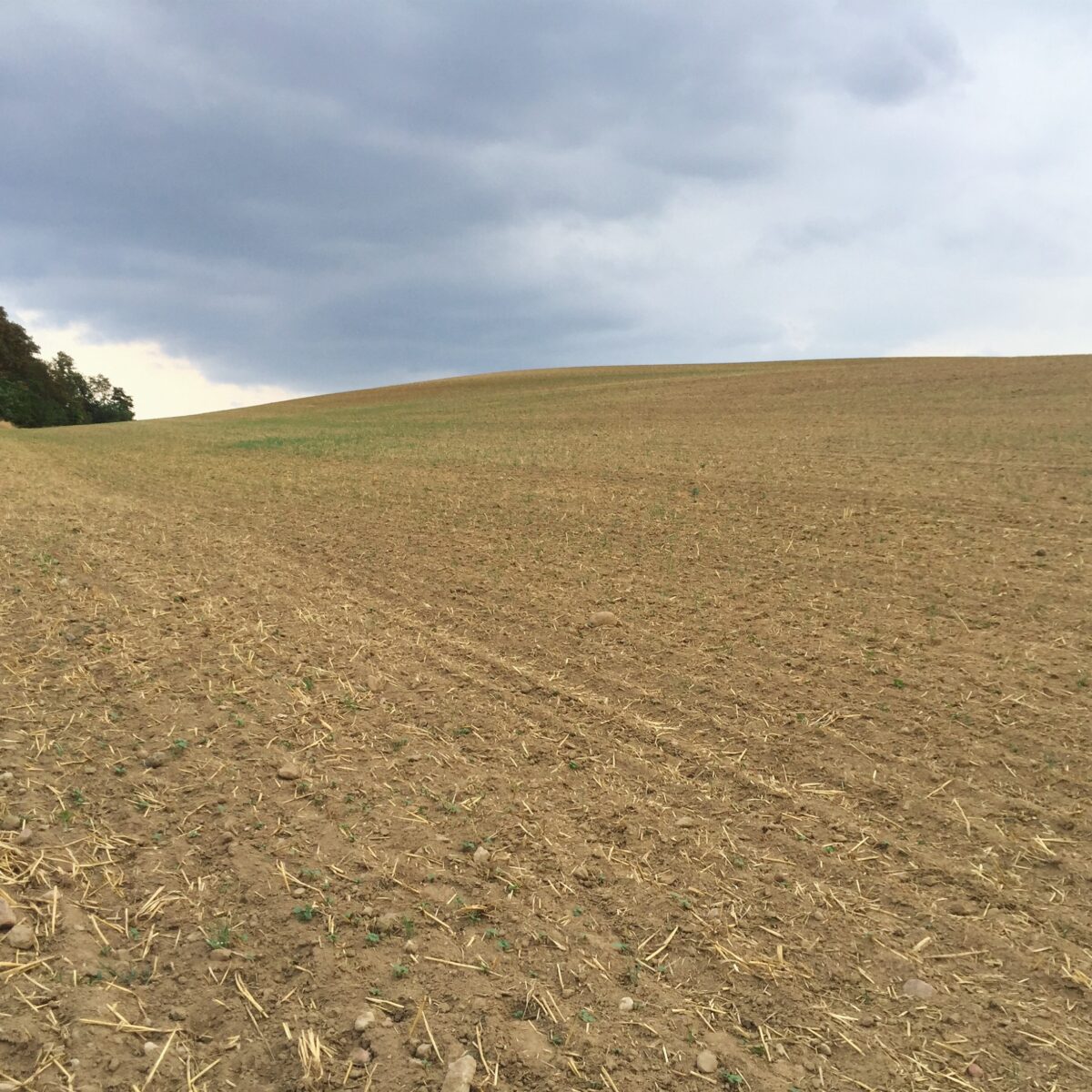
Travelling across Northern Europe all the way across Wales, England, the NE of France, Belgium and right across the central part of Germany, gave me a good view of farming in Northern Europe. And once we’d left the UK that view wasn’t encouraging to be honest. All we saw, particularly across Germany, was field after field of maize, grown primarily for animal feed and biogas. Mile after monoculture mile. It’s a high-yielding, highly-abused crop that is wrecking mile after mile of European soil. I remember in one field trying to dig for soil, but all I found was dust, confirmed when a combine passed, sending a cloud of dust in our direction. It’s crazy to think that farmers in Germany can be paid a subsidy of 500 euros per hectare to grow a soil-destroying crop as a pseudo renewable energy source. It’s hard to blame the farmers when they’re being paid that much to do it, and being taught that it’s the right thing to do. It was so sad to see so few animals outside in Germany — a big contrast to the British countryside. I learnt there that even organic dairies can keep their cows in a barn all year-round.
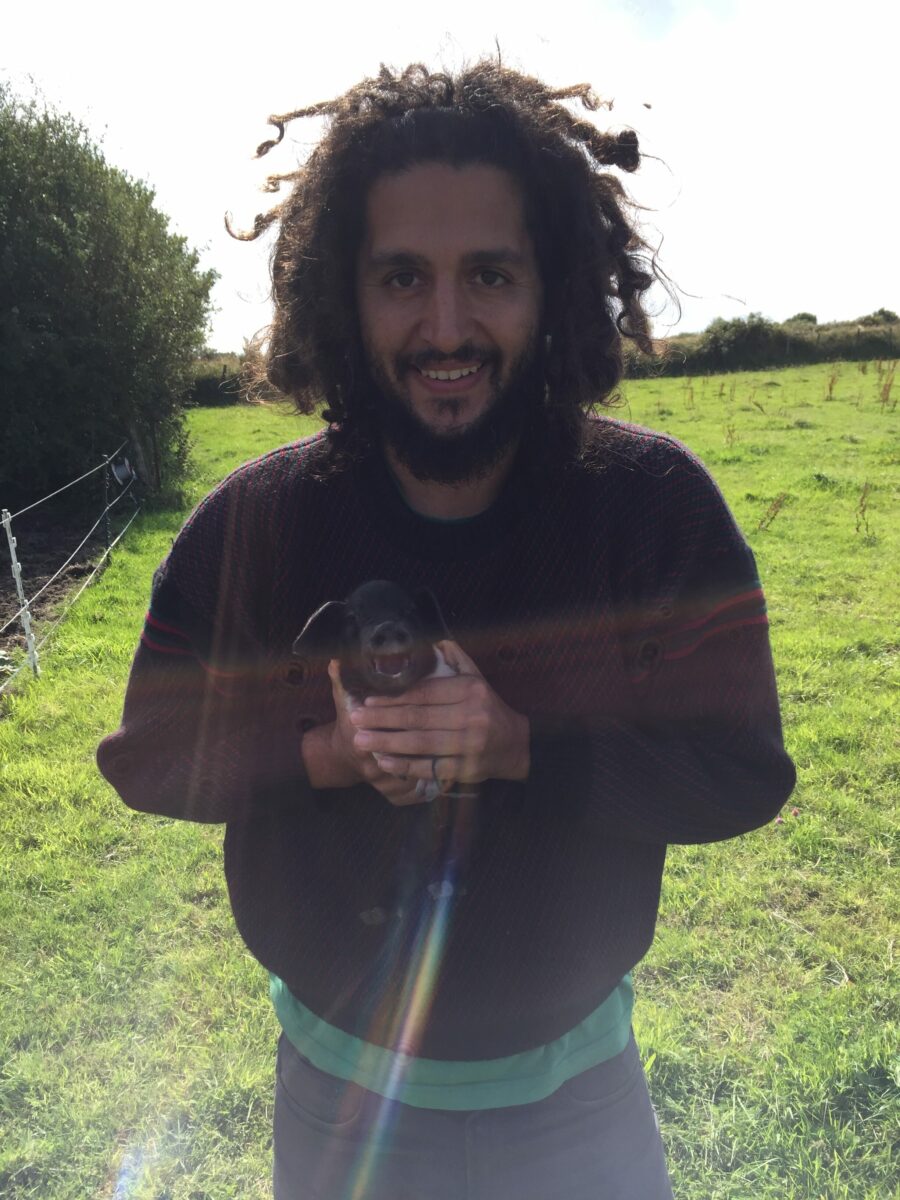
It’s why it’s so heartening that the farm we visited is doing so well because it’s completely bucking the trend in a country where large-scale industrial monocropping is the norm. I was surprised actually, as I thought Germany would’ve had a forward-looking approach to farming, but clearly the principles of agroecology are yet to make it there. It made me feel more thankful for British farming, despite our own challenges here.

Whilst talking about all these exciting things, I think it would be remiss of me to not mention the challenge this all brings, particularly given that we’re new parents to a 4 month old baby. It’s easy to assume that it’s all #livingthedream whilst flicking through our Insta feeds. No-one makes a post about the days when getting out of bed is painful but you still have to keep going.
We had a fair bit of flu flying around last month, and energy levels have been pretty low. Being ill with a farm was never easy, add a baby into the mix and it’s hard work. Some days we’re just counting the hours until we can get to bed and get some sleep – hopefully. The chronic sleep deprivation is real – it affects everything. I can literally count on one hand how many full nights’ sleep I’ve had and Sam can’t even count that much. We’re so fortunate to have Anthony and Emma – they’ve supported us so much through this period. Jacqui too – even though she’s busy building a house she’s still been here to support us.
Having a baby is the best thing that’s ever happened to us – it’s the best feeling on the planet and it’s already changed us in ways we never expected. Still, it’s bloody hard work too!
With so much going on I also feel like my anxiety levels are quite high. There’s so many logistics to sort, potential problems to deal with, and so many new things to learn and take on board. Because we’ve started calving sooner than we’d like, we’ve ended up having to cram 6 months worth of work into 6 weeks. The weather changing to winter is also a bit nerve-wracking; last winter wasn’t fun and I don’t want a repeat of that. This year I think we can keep the cows out until December . Out-wintering cattle when well managed definitely works, as we’ve seen it on other farms, but in the early years of taking on new fields it can be tricky because the grass sward isn’t dense enough and the root system not well enough established. The ground easily poaches when this is the case, as we’re finding already. The winter barn work has fallen down the list, so it’s one more job that still needs doing for which there’s no time for.
Overwhelm stalks our every step at the moment.
And that’s only really half of it. We’re also putting in an application for funding from the Welsh Government for a butchery amongst other improvements, and finally put in our application with The Woodland Trust to plant more trees on the farm. It’s all go, go go at the mo. Sam is enjoying getting back into farming after pretty much a year out of it. And slowly by slowly it seems that each piece of the puzzle is falling into place. Yes we’re tired and overwhelmed with the scale of change right now but the grass is green, the milk is flowing and our beautiful baby girl is healthy and happy — life doesn’t get better than that, even if it is sometimes a struggle. In an ideal world we’d have tons of energy and time in order to fully and easily enjoy all this. But real life isn’t really like that, you have to take enjoyment in amongst the challenge.



